Case Studies.
Add Case Study
Our Case Study database tracks 22,657 case studies in the global enterprise technology ecosystem.
Filters allow you to explore case studies quickly and efficiently.
Download Excel
Filters
-
(6,653)
- (2,601)
- (2,127)
- (945)
- View all
-
(5,642)
- (2,469)
- (1,692)
- (826)
- View all
-
(5,571)
- (2,178)
- (1,766)
- (643)
- View all
-
(5,247)
- (2,179)
- (1,715)
- (1,321)
- View all
-
(2,881)
- (1,448)
- (574)
- (376)
- View all
- View all 15 Technologies
- (1,985)
- (1,985)
- (1,915)
- (1,679)
- (1,629)
- View all 42 Industries
- (8,728)
- (4,742)
- (3,618)
- (3,233)
- (2,947)
- View all 13 Functional Areas
- (3,304)
- (2,787)
- (2,603)
- (2,006)
- (1,630)
- View all 129 Use Cases
- (13,581)
- (5,296)
- (4,272)
- (3,520)
- (2,856)
- View all 9 Services
- (504)
- (432)
- (416)
- (382)
- (301)
- View all 1083 Suppliers
Selected Filters

|
Dignity Health Wayfinding
Dignity Health needed a mobile solution for wayfinding and patient experience that would reflect its corporate branding while serving the unique needs of each facility
|
|
|
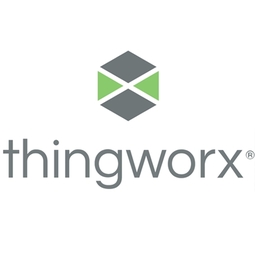
|
Reducing the Rate of Readmissions
The client had limited or inefficient integration of its data sources, which made it difficult to see patients through a longitudinal lens. The client was, however, uniquely positioned to leverage the expansive patient data contained within its network of care, and set out to do so in 2012. Specifically, they wanted to improve the outcomes of patients with Ischemic Heart Disease (IHD) through improved care management with goals of reducing readmission rates, better managing patient cholesterol levels, and better managing patient blood pressure. Specifically, the regional healthcare provider was interested in implementing a machine learning platform, that quickly automates complex analytical processes and integrates powerful information into existing applications and portals.
|
|
|
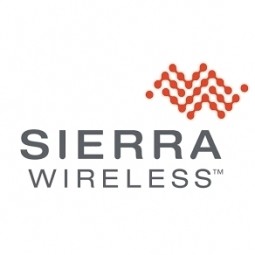
|
Keeping Electric Vehicles Running With AirVantage Smart Automation
Schneider Electric develops charging terminals for Electric Vehicle Charging Stations (EVCS) throughout the test territory. In order to meet the timeline required for the project, as well as include the remote monitoring and control necessary to manage charging terminals dispersed through 51 towns and five counties, Schneider Electric turned to Sierra Wireless to assist in a quick development of a service and maintenance connected electric charging terminal.
|
|
|

|
Proactive Maintenance Saving Millions of Dollars
One of the world’s largest exploration and production companies was operating as leanly as possible given the prolonged slump in oil prices. As such, an operational parameter wasn’t effectively monitored and equipment failure went unnoticed in the machines.
|
|
|
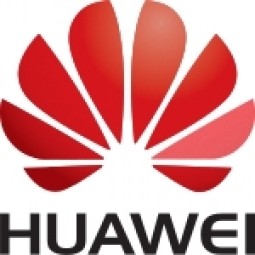
|
Smart Liaoyuan: The First Smart City in Northeast China
• Liaoyuan's demands for building a high-quality smart city, covering multiple sectors, including city management, emergency command, public security, and health care. • Unable to connect different functional sectors for lack of a unified information system; without IoT, city management is restricted to manual intervention.
|
|
|

|
Connected Technology Evolves Farmers' Operations
Customers of Nebraska Engineering Company (NECO) needed the capability to know the grain dryer’s status at all times while couldn’t afford to have someone at the dryer all the time to ensure it is doing what it is supposed to do.
|
|
|

|
ABB Increases Productivity and Reduces Operational Costs
ABB relies on Control Center to monitor connections to its customers' industrial robots for potential problems. As soon as conditions change, ABB engineers want to know about it so that they can act on it. Engineers wanted a solution so that they can anticipate problems by constantly analyzing the information that they receive from the devices. They have developed a set of predictive KPIs, which they share with their customers to help them decide if their equipment requires maintenance.
|
|
|
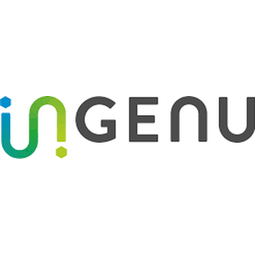
|
Intelligence for Digital Oilfield (WellAware)
WellAware was exploring the market for a reliable solution for collecting data from its customers’ remote well locations. According to WellAware CEO, Matt Harrison, the company’s customers have a tremendous need to tap into the intelligence provided by the digital oilfield. In selecting a provider for its network, WellAware compared the features of an array of communication technologies. Cellular provided adequate coverage, but at the rate of $25-$50 per month per device, the cost was extremely high. Satellite was even more expensive, in excess of $100 per month per device. As a typical oilfield consists of more than 1,000 wells, implementation of these technologies would quickly become cost-prohibitive. Additionally, cellular and satellite technologies were only able to deliver between 85-95 percent data availability and were not able to transmit data at sub-minute frequencies. This was not sufficient to meet the reliability expectations of WellAware’s customers.
|
|
|

|
Automated Slab Tracking at ThyssenKrupp
Steel slabs usually weigh between 20 to 40 tons each. After production, the surface is scaly and rusty. Outdoor storage and sea shipment expose the slabs to rough conditions. Loading ocean vessels is time consuming and total cost can easily exceed a few hundred thousand USD.RFID technology offers many benefits. RFID transponders are small, store the identity of the labelled product and enable readingout this data via antennas from a distance of several metres. However, there are special requirements for the use of RFID in thesteel sector. Firstly, the radio waves of the RFID readers are reflected by metal which creates major problems for reading out.And secondly, they must be attached securely as the heavy slabs weigh tons and can rub against each other during the transporton ships and trains, causing the labels to become detached or to be destroyed.
|
|
|

|
Eseye puts Airmax on Target for 15% Cost Reduction
Airmax wanted a provider who would take complete responsibility of their connectivity, without restricting them to a single network. They wanted a simple solution along with assurance that they were getting the best value for money, customer care and network flexibility.
|
|
|
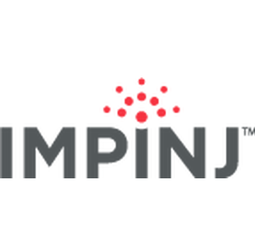
|
Retail Uses RFID to Enable Cold Chain Monitoring
Like most grocery retailers, Hy-Vee is faced with the challenge of providing the highest quality products to its shoppers. Shoppers want the longest possible shelf life from perishable products and expect a consistent product experience each time they shop. Controlling the quality of products sold leads to shopper loyalty, which is of paramount importance to the success of Hy-Vee. Before products arrive in stores, Hy-Vee's distribution centers (DCs) handle items including dairy products, fresh meats, seafood, deli items, produce and frozen goods, all of which have different temperature needs and sensitivities. During transit from suppliers to DCs, Hy-Vee has limited visibility and temperature management abilities due to large amount of supplier managed transportation. For instance, during a week-long transit, a supplier's carrier equipment may malfunction, causing an item to thaw and then refreeze once repairs are made. Hy-Vee sought help from TempTRIP, an RFID solution provider that focuses on shipping, storage, receiving, and temperature control. TempTRIP's EPC RFID tags use Impinj chips to monitor and report temperature readings throughout the shipping and receiving process. The tags can also be re-configured and re-used, a unique feature within the current market of temperature monitoring devices.
|
|
|
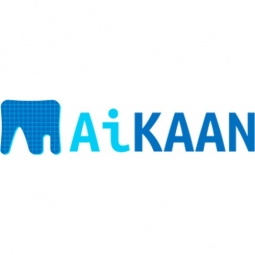
|
Smart Boilers -IIOT
-Visibility of a large fleet of remotely located Industrial grade IoT Devices.-Health and performance monitoring of the end devices required additional code.-Frequent failures require truck rolls.Data Connectivity issues.
|
|
|

|
SmartSignal Eliminated Risk of Equipment Failure
Given the extreme volatility in the Oil & Gas market, a global Oil & Gas company was operating as leanly as possible. As such, the company was unable to monitor hundreds of sensors for each turbine on a daily basis, causing equipment maintenance problems to go unnoticed.
|
|
|
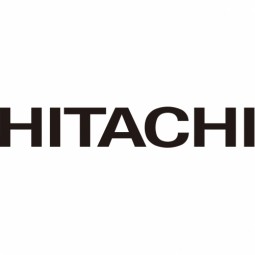
|
IIC - Factory Automation Platform as a Service (FA-PAAS) Testbed
In recent years, amid increasingly intense global competition in the manufacturing industry, there has been a growing demand for more rapid product development and market introduction, quality improvements and shorter lead times in order to quickly respond to the rapidly changing market environments and management environments through the introduction of new technologies and collaborations between companies. In this backdrop, there has been a growing expectation for overall optimization that uses data related to manufacturing in the increasingly global supply chain to connect the front lines of manufacturing with management, suppliers, and customers. This in turn has given rise to a need for secure connections between a variety of devices in FA environment and cutting-edge IT services (e.g., Big Data and the cloud) and for the accelerated development of applications in the field of next-generation factories connecting business-to-business (B2B) applications unleashing real economic value to effectively compete in the global marketplace.
|
|
|

|
Intelligent Telematics uses IoT to improve fleet safety and cut insurance costs
“IoT plays a critical role in keeping costs down. If a third party takes hold of a claim, costs spiral out of control,” says Sam Footer, Head of International Business and Strategic Development at Intelligent Telematics. Typically, corporate trucks and taxis are blamed for crashes involving consumer cars, prompting companies to often settle claims to avoid going to court.
|
|
|

|
MachineMetrics helped Carolina Precision saved over $1.5M on machine monitoring
Gary Bruner, the president of Carolina Precision Manufacturing, a contract manufacturer that specializes in small-diameter, close-tolerance CNC Swiss turned parts, had a problem. Over breakfast that morning, Gary had logged onto the MachineMetrics monitoring system on his laptop at home to check the status of his machines assigned to a lights-out operation, but saw immediately that two of his machines were not in production. “What’s wrong with machines 35 and 36?” he thought to himself. Upon arrival to the shop, Gary learned from his operator on duty that this type of hold up was nothing out of the ordinary, and was in fact a product of inefficient startup procedures that had simply never been analyzed or augmented previously. In an industry with razor thin margins, Gary understood that the keys to growth and success were in efficiency and quality. He understood the importance of keeping tabs on production stats, job status, uptime, and setup. However, there was no way to know how well machines were doing in real time. What was causing this additional downtime? Furthermore, CPM’s current methods of measurement and data collection were not only time consuming, but had quickly becoming outdated. Historically, CPM had an employee dedicated to the collection of utilization data. This employee would walk around to each of the machines, collect scrap tickets post-production, talk to operators, and record yesterday’s data into their current ERP system; not to mention that this manual data collection was prone to errors, and would take upwards of 2 hours per day. Without the ability to visualize their results, the recorded data was not very actionable.
|
|
|
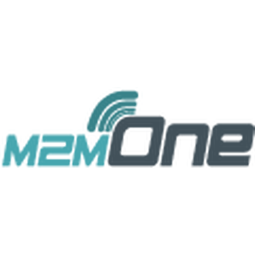
|
Facility Management Solution in Construction Industry
In the construction of Crown Towers in Perth, hundreds of workers enter and exit the construction site each day, totalling into thousands by the completion of the project. All of these workers perform different tasks and come from different agencies, making it difficult for supervisors to track who does what, when, and where on such a large-scale site. An easy-to-use access, security and facility management solution was required.
|
|
|
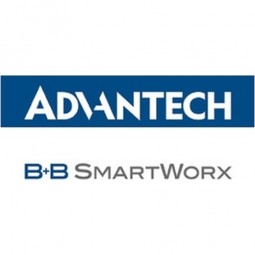
|
Machine Condition Monitoring for a Distribution Center
A distribution center used a conveyor belt systems to transport a wide variety of products to appropriate locations. When all went well, products were delivered, stored and shipped back out with a minimum of trouble. But a breakdown in any of the motors running the conveyor belts could interfere with operations and cause unacceptable shipping delays. The distribution center decided to use remote monitoring and decision analytics to predict where and when, preventative maintenance could keep small problems from ballooning into major disruptions.
|
|
|
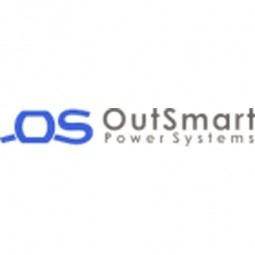
|
Supermarket Energy Savings
The client had previously deployed a one-meter-per-store monitoring program. Given the manner in which energy consumption changes with external temperature, hour of the day, day of week and month of year, a single meter solution lacked the ability to detect the difference between a true problem and a changing store environment. Most importantly, a single meter solution could never identify root cause of energy consumption changes. This approach never reduced the number of truck-rolls or man-hours required to find and resolve issues.
|
|
|
_18.jpg)
|
Remote Monitoring
Kaunas Energija's Heat and Power Plants were distributed across the country, including in places lacking an internet connection. This made supervision and maintenance difficult and expensive.
|
|
|

|
Boeing Cuts Production Time by 25% with Skylight on Glass
130 miles of wiring go into every new Boeing 747-8 Freighter, tucked away overhead and underfoot from the cockpit to the wheel wells.Every Boeing aircraft, from the workhorse 737 to the new 787 Dreamliner, has multiple configurations, each with its own wiring scheme. In past years, technicians used “phone books” full of diagrams to do their work. Even with laptops, the same basic problem arised: constant look-away interruptions as workers got directions and cross-checked diagrams and schematics.
|
|
|
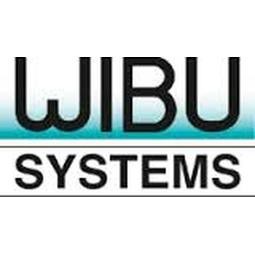
|
Dedicated License Management for B&R
More and more functionality of machines and manufacturing facilities is determined by the controller software, production settings, and machine data. This essential know-how of the machine producer must be protected and shielded from manipulation by competitors, organized crime, or simple incorrect use. New business models need to be supported. And any solution has to be highly reliable and work even in harsh environments.
|
|
|

|
Smart City Spotlight (Paris)
The challenge with the city of Paris was to improve multiple city services and as a hub for smart city innovation, Paris has committed to reduce public lighting energy consumption.
|
|
|

|
Highway Signs IoT Solution
We all are familiar with electronic road signs both those fixed to overpasses and those portable devices on the highway or even secondary back roads. For far too long it was costly and difficult to update the messages on these signs as it required an approved individual (Police, Department of Transportation, etc.) to update these signs. This is especially critical during safety events such as an Amber Alert - a better solution was needed.
|
|
|

|
Remote Operation and Services for Oil Production in the Arctic Circle
World’s largest FPSO vessel ever built needs to meet the high standards linked to on-site safety and a healthy working environment adapted to the climatic conditions in the Barents Sea
|
|
|

|
Smart parking in Ibiza, Spain
With 133,000 inhabitants that receives more than 2 million tourists a year, this seasonal influx complicated access to the Ibiza's centre and caused congestion of vehicles looking for parking in La Marina. This affected the well-being of the population and even had a negative impact on trade and the image of the area. The project that we implemented for the local government sought to: -Speed up parking in La Marina. -Reduce vehicle flow to the centre. -Improve the quality of life and satisfaction of residents and tourists. -Promote the shopping area of the centre.
|
|
|

|
Electronic Prescribing of Controlled Substances Offers Security
Pharmacists often make a mistake in filling the prescription because of a poorly-written script. These mistakes can lead to dangerous misdosing or drug interactions with other medicines that have an adverse effect on the quality of patient care. Exostar recognized the huge burden for health IT vendors to enable Electronic Prescribing of Controlled Substances (EPCS) for their providers.
|
|
|

|
Delivers Business Differentiation to Vantron
Taking advantage of the fast growth of China and the growing demands in embedded computer systems, Vantron technology was established in 2002 by Silicon Valley professionals and headquartered in Chengdu, China. In addition to readyto-run low-power embedded systems, Vantron also provides assistance in application software development, tailoring its embedded systems based on customers’ requirements, and offering turn-key manufacturing services. With customers in industries such as healthcare, heavy equipment, vehicle tracking and telematics, looking for customized solutions, Vantron saw more and more customers looking for interconnectivity through the cloud so that they could access and interact with their equipment remotely
|
|
|
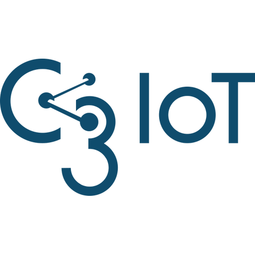
|
Predicting, Diagnosing and Reducing Equipment Failures
One of Europe’s largest integrated electric power companies was looking for analytics solutions to reliably forecast equipment failure and improve condition-based maintenance for its coal-fired power plant. With a diverse array of coal, oil, and gas/CCGT power plants, the utility’s more than 50GW worldwide generating portfolio has been under pressure to streamline global operations and reduce generating costs (both CapEx and operations /maintenance O&M expenses) by 7-10%.
|
|
|
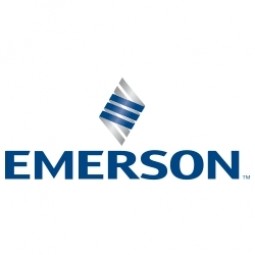
|
Refinery Wirelessly Monitors Junction Box Pressure
The refining company needed to continuously monitor the pressure in Z-Purge junction boxes around the refinery. These junction boxes were maintained at a low positive pressure to prevent process gasses from entering the junction boxes. These junction boxes are widely distributed throughout the plant. Previously these junction boxes were manually monitored by operators on periodic rounds in the refinery.
|
|




